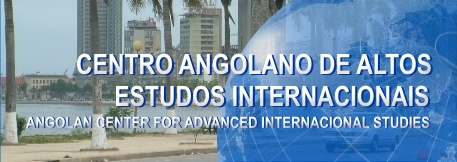![]()
|
|
 |
|
|
|
|
|
|
|
|
|
|
THE PROVINCE
OF NAMIBE
Namibe is undoubtedly the third harbour of Angola and it has conditions to become one of the most important of all Western Africa. It serves mainly the export of fish as well as agricultural goods from Huíla. It is at the same time a commercial and fishing harbour. There are in Namibe maritime industries (fishing, production of flour, oils and cannery) always in continuous exploitation, creating incredible activities with sea products and with the increase successively achieved of material means of work and progressive values of exports.
The mineral port was finished in 1967 and represents an engineering work to a world scale, almost only for the loading of iron ore and it is also used for the unloading of fuels. It has exceptional conditions to be considered one of the best mineral ports in the world allowing the mooring of ships of 150000 ton., at any moment. It has also an airport with international characteristics, 7 km from the capital. The main economic activity is fishing. Salines, extraction industry of adornment stones (marbles and granite) and farming are other activities with good present and future potential. Presently, the majority of the captured fish is to salt and dry and the rest is freezed, used to make farines, oils and for cannery. Besides the fish, there are other sources of proteins, of great value that can and must be dully used. There is also famous crab and mussels for national consume and export. The Province of Namibe is one of the most privileged points in the country. There, the sea, desert and savana paint an amazing picture and the climate is even considered as the best of all the country’s coast. Between Namibe and Tômbwa lives the Welvitchia Mirabilis – unique species in the world of a plant similar to a giant octopus, symbol of resistance and survival of wild and vegetable life in the desert of Namibe. The magnificent desert of Namibe offers a set of exceptional conditions for hunting lovers and several ethnographic characteristics worthy to be studied and observed. Along the coast, the Atlantic gives us wonderful beaches. Medicinal waters of Montipa flow in an excellent place for rest in the country of Bibala, about 150 km from the capital. The centre is included in a singular area adapted to the practice of hunting for its great number and variety of animals that make of it their natural habitat.
The first name – Porto Alexandre – came from the name of the British explorer
James Edward Alexaner that came to Benguela (that was then formed by the
present county of Namibe) officially authorised in 1834. After independence,
the name changed to Tômbwa – name by which the natives called the Welvitchia
Mirabilis. |
Places of historical interest Archaeological remains: Pinda Military Barraeks, Kapangombe Military Barraeks, Capa da Capraia and Fumas do Kapangumbe. Monuments: Palácio do Governo, Fortaleza do São Fernando, nowadays the Command Centre for the Angolan Navy, Namibe Port Captainey, Tribunal do Comarea do Namibe (Central Court), Correios e Telégrafos (post Offiee building), CFM Railway station and Fortaleza do Capangombe. Morro da Torre do Tombo, Bentiaba (Prison centre) and Tehipopilo-Caraculo rock engravings. Religious Monuments: Churches: São Adrião, N.S. Fátima, Praia Amélia Chapel, Nossa Senhora do Mundo (Bibala), Quiploa Chapel.
“The most incredible bays of the country – Moçâmedes, Porto Alexandre and Baía dos Tigres – are all of excellent quality but the last two, for their wideness and excellent conditions, compete with the best ports in the world: I don’t know any Port in the world like Porto Alexandre.” - said a 19th Century famous navigator. Tômbwa is the second demographic centre and the first fishing port of the country. It is situated at 45 miles South of Namibe, in a splendid cut of the coast, famous for its safe shelter and fishing quality of its sea. The settlement began by fishermen coming from Algarve in 1860, starting afterwards the export of goods from their industries to Northern ports and near countries: Ambriz, Congo, S. Tomé and Gabon. Some of the best shelter ports of the African Coast are situated in the Angolan coast. In the region, Salinas, Namibe, Tômbwa and Baía dos Tigres; from the four ports, the best its Tômbwa.
It is a wide and magnificent port
protected from the coastal undulation forming a Southern shelter with several
miles of length. Tômbwa can shelter in his
interior and exterior ports a fleet so big that probably does not exist. Its
magnificent natural conditions and specialised aspect – fishing – do not
need big works. The several cannery industries placed there, have the
necessary means for their functions. Tômbwa is today the most important
fishing port in Angola. |
|
|